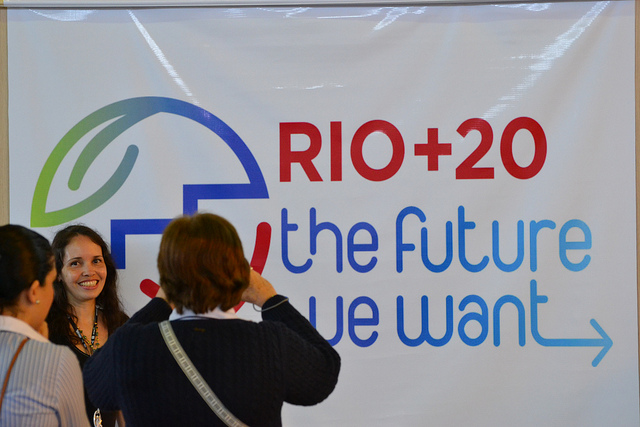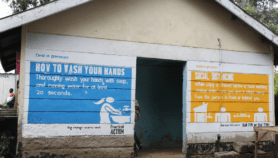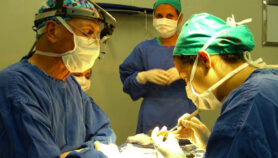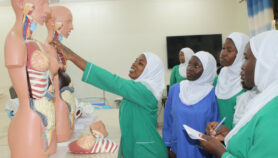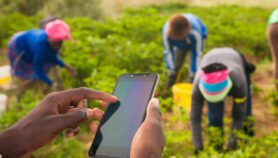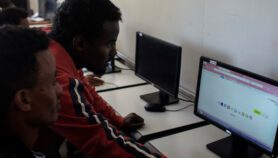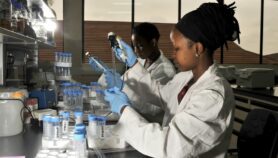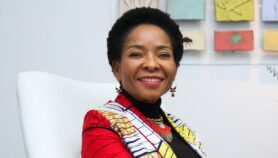Send to a friend
The details you provide on this page will not be used to send unsolicited email, and will not be sold to a 3rd party. See privacy policy.
The year was marked by one of the most anticipated global environmental meetings in 20 years: the UN Conference on Sustainable Development (Rio+20), held in Rio de Janeiro, Brazil.
The summit was a major step towards hammering out a development roadmap to follow after the Millennium Development Goals (MDGs) expire in 2015.
SciDev.Net analysed the key milestones, from the launch of UN's draft negotiating document, 'The Future We Want', the ambivalent welcome of the document by the scientific and engineering communities, to the splits over what the final document should contain that lingered until the close of the summit.
In the run-up to the summit scientists waited anxiously for new developments and struggled to highlight the importance of science for the Rio+20 negotiations.
And while some were sceptical over the summit's final declaration and what it would achieve, there was also real progress ahead of the summit and on its sidelines.
This included the launch of a global alliance to study planetary changes, the appointment of a high-level panel to advise the UN on approaches to development post-MDGs and an announcement by UN secretary-general Ban Ki-moon of a new international scientific advisory board set up to offer him guidance on science-related issues.
While scientific communities said the final agreement lacked adequate recognition of the importance of science in achieving sustainable development, they continue to work on the issues after the summit.
Progress continued with the launch of a network of universities, research centres and technical institutions to provide practical solutions for major sustainable development challenges laid out in the Rio+20 agreement.
Climate change, disasters and conflicts
We saw moves towards solving the other two major challenges awaiting the international community in 2015: agreeing on a binding climate change deal to replace the Kyoto Protocol and a new disaster reduction framework to supersede the Hyogo Framework for Action.

The Hyogo Framework aims to help vulnerable countries reduce the impacts of climate-related disasters
Credit: Flickr/ Oxfam GB/International
There were calls for more disaster relief funding, the need for more linked-up action to avert growing disaster risk and more research on how ecosystems can be used in disaster prevention.
As if natural disasters were not enough to worry about, 2012 also saw human conflict undermine science, for example in Kenya, Mali, Nigeria and Syria.
But there were also calls for better use of research for peacekeeping and human rights, innovation for humanitarian relief in conflict zones, as well as new ways of taking conflict into account in development and aid efforts, and novel ways of detecting and removing land mines from former war zones.
High technologies and cutting-edge science
Development and application of cutting-edge science and novel technologies gathered pace and left environmentalists and, in some cases, policymakers, behind.
Controversial trials of genetically modified (GM) mosquitoes in the Cayman Islands and Malaysia were criticised for their deficient risk assessment: decisions to release GM insects into the wild should be made more openly and based on better science, a review said.
Yet the releases of GM mosquitoes continued, this time in Brazil, where tests showed that releasing millions of GM insects into the wild can cut the number of disease-carrying mosquitoes. New results showed that the Cayman Islands trial had also been successful at slashing mosquito numbers.
Meanwhile, emerging fields focusing on high-tech climate engineering (geoengineering) and redesigning living organisms (synthetic biology) saw developments affecting low-income countries.
These included calls for developing countries to be involved in geoengineering discussions, as well as increase their participation in research on synthetic biology, a field that more than 100 NGOs believe urgently needs stronger international oversight.
UN nations that gathered in October at the 11th Conference of Parties (COP 11) to the Convention on Biological Diversity, in Hyderabad, India, called for more science-based information about synthetic biology and geoengineering, as well as increased precaution relating to work in these fields.
Another frontier close to being opened up is the complex process of mining at the bottom of the deep seas, some of it in a quest for valuable rare-earth minerals used in information and communication technologies (ICTs).
The world's first such mine was expected to begin operation this year in the Pacific, despite strong opposition from environmental campaign groups and claims of scientific faults in the project's environmental assessment. Others maintained that despite concerns over adverse impacts, deep marine mineral exploration is set to become a global industry. Yet, in December, the project was unexpectedly halted for financial reasons.
But while all eyes were on this Pacific project, others made headway. India joined the deep-sea mining race, which it sees as a strategic aim. And another operation, planned to start in 2014 in the Red Sea, promises riches to Saudi Arabia and Sudan, which lost most of its oil fields when South Sudan seceded in 2011.
Latin America and the Caribbean
There were ups and downs in 2012 in Latin America and the Caribbean, with research and development being on the receiving end of both incentives and threats.
The threats were primarily in the shape of budget cuts, for example in Brazil, but also came from a declining interest in science careers.
Science also appeared in danger of being sidelined in two nations: in Colombia, scientists urged the government to offer more support to science and technology, while the Peruvian government dropped a plan to create a science ministry.
Other challenges came from internal political conflicts such as that in Paraguay, debates over the use of mining royalties in Colombia to fund science and Brazil's new Forest Code that is designed to regulate land use and preserve wild habitat.
But laws and tax incentives were also introduced to stimulate science and innovation, for example in Chile. A science tax in Venezuela is raising money for research and development, but critics say the government has too much control over what research is done.
In Latin America, ICTs and social media have generated specific applications to aid the spread of knowledge and educational content. There are also attempts to assess the use of ICTs in disaster warning and to monitor disease outbreaks.
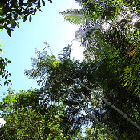


Educating the public on biodiversity is the key to protecting nature, argued a public consultation
Credit: Flickr/Tom Bradnock
Surveys showed increasing concern for biodiversity loss and botanic gardens around the world linked up to try to restore ecosystems.
The fight against Chagas disease had a boost in 2012, with funding secured for new therapies (article in Spanish) to be tested in the region and with the genome of one of the disease's insect vectors decoded by a team including Argentinian, Brazilian and Uruguayan scientists.
Earthquake science was also in the spotlight. Experts highlighted the need to speed up work on a reliable system for predicting potential aftershocks after a major earthquake and a new technique for building low-cost earthquake-resistant homes was successfully tested in Peru.
Sub-Saharan Africa
Africa witnessed attempts to boost the role of science in the development agenda.
One of these was the creation of a high-level panel of scientists to review and propose improvements for Africa's science and technology roadmap.
Another development was the decision by the Common Market for Eastern and Southern Africa to turn to science and technology to encourage trade and investment in the region.
Despite being battered by years of bad governance and international isolation, Zimbabwe seemed to be on the path to reviving science as one way to address its many socioeconomic challenges. The country announced that it would allocate US$1.5 million a year to research, development and commercialisation of innovations. It has also decided to focus on nanotechnology as a route to new drugs.
Meanwhile, the Kenyan government's decision to ban the import of GM food upset scientists, with some warning that this could damage biotechnology research. And there is still a widespread mistrust of biotechnology among farmers and the public, leading to low adoption of innovations geared towards improving food security.
Science journalism seemed on an upward swing in Africa in 2012. Two regional science journalism networks were launched, one for East Africa and one for West Africa. Both networks aim to bridge the gap between science, policymakers and the general public.
And there have been calls for a science news service for Africa and for more science on Senegalese TV and in Ghana.
The Middle East and North Africa
The winds of change are still blowing in the Middle East and North Africa. After two years of the Arab Spring, the region is still politically unstable, but science is now widely seen as being key for development.
Egypt became the first Arab Spring country to get an elected president, one who has ambitious plans for science. In addition, a new constitution voted in during December enshrines funding for science as the responsibility of the state for the first time.
Also, a non-governmental initiative was launched in Egypt to try and change science, technology and innovation laws that may be impeding socioeconomic development.
Seeking more alliances to boost their science sectors, countries such as Algeria, Egypt and Tunisia are starting initiatives to open up collaboration with other developing countries, while the Arab Science and Technology Foundation has launched a scheme to fund innovation in the Arab Spring countries.
The Organization of Islamic Countries Standing Committee on Scientific and Technological Cooperation also announced a survey designed to spur innovation in Islamic countries.
On the other hand, science is still suffering from political instability: one of the region's most important research institutions, the International Center for Agricultural Research in the Dry Areas, had to leave its Syrian base due to intensified fighting in the country, and renewable energy project DESERTEC is at risk after industrial partners pulled out and key governments lost interest.
South Asia
Drought loomed over tracts of South Asia in 2012, due to below-average rainfall. Poor monsoon rains raised irrigation concerns in the region, as parts of India, Pakistan and Sri Lanka faced diminished ground water reserves that affected sowing patterns.



Afghanistan-Pakistan border is one of the remaining global reservoirs of the wild polio virus
Credit: Flickr/Gates Foundation
The continuing fight against polio along the Afghanistan-Pakistan border, one of the few remaining reservoirs of the virus anywhere in the world, caught global attention. Scientists gained crucial leads in identifying the genetic structure and transmission patterns of polio strains in the region. And Pakistan's efforts in the battle against the disease won acclaim.
In November, Pakistan launched a new science policy that focuses on development and innovation. And India hosted the first summit of the region's science academies, where the academies' leaders agreed to set up a regional network to foster science collaboration on common challenges.
The region also got a new learning platform that aims to share 'climate-smart' agriculture practices, as well as a new cloned goat that gives the world-famous pashmina wool.
Meanwhile, fierce debates continued over GM crops and whether the Himalayan glaciers are melting.
South-East Asia and the Pacific
One of the region's biggest stories was the scandal in Thailand over plagiarism by a senior government science official. Supachai Lorlowhakar was charged with plagiarising his doctoral dissertation at Chulalongkorn University, sparking further investigations, retraction of his PhD and, finally, conviction for forgery.
Countries in South-East Asia have demonstrated growing interest in electric vehicles for mass public transport. The Philippines led the way by launching a 21-vehicle fleet of e-jeepneys in March and ended the year by unveiling that it is to introduce 100,000 tricycle taxis.
The Philippines also led the region in banning the use of plastic bags and others have now followed suit. But one expert expressed concern over the unscientific way that local governments are copying the total ban.
In the south Pacific, a coconut genebank in Papua New Guinea is at risk from a disease outbreak and scientists raised concerns over tuna overfishing.
We also had a brief look at two internationally isolated countries: North Korea and Myanmar. A report revealed North Korea's agroforestry practices, which some hoped would lead to further science links with the international community, while Myanmar's recent reforms have so far not done enough for science and education.
Policy announcements and recommendations pointed the way to improved collaborations in science and education between the region and Australia, China, the European Union and other Pacific rim countries.
China
China signed a deal to develop new tuberculosis vaccines, which should help to boost the number that get out of the lab. It also said it would start producing the world's first hepatitis E vaccine.
The country became a powerhouse in nanotechnology research as well as the world's second largest research funder, after the United States but ahead of Japan. It also managed to balance its scientific output across different disciplines, reflecting more closely the way most advanced economies carry out science, and it improved its performance in innovation.
Chinese scientists examined the genetic changes that have been introduced to maize over centuries of artificial selection and gained insights that may help them improve the crop in the future.



A new rice gene discovered by Chinese researchers could improve the quality and yield of the staple crop
Credit: Flickr/randomwire
Researchers in China also identified a rice gene that could improve the quality and yield of this staple crop and eased some of the fears surrounding the spread of genes from GM rice. And, at a major conference in China, scientists launched a global monitoring system in response to the spread of deadly stem rust fungus among wheat crops in Africa and Asia.
Yet, current crop yields seem to be stagnating.
And the country is at high risk of drought, though it is also relatively well placed to deal with the drought. Global warming could even improve crop yields in some of its northern areas.
China kept increasing its global muscle as a science powerhouse, most notably, by promising to boost links with Africa. President Hu Jintao pledged to expand China-Africa collaboration in science by maintaining successful research programmes and supporting new initiatives in agriculture, health, water, forestry and meteorological technologies, as well as capacity building.
The country hosted a major meeting of the Academy of Sciences for the Developing World (TWAS), where it pledged US$1.5 million for TWAS, and the president of the Chinese Academy of Sciences took over its presidency. The meeting also saw TWAS's name being — somewhat controversially — changed to The World Academy of Sciences.
The OECD (Organisation for Economic Co-operation and Development) outlined how China and South-East Asian nations should work together on innovation.


